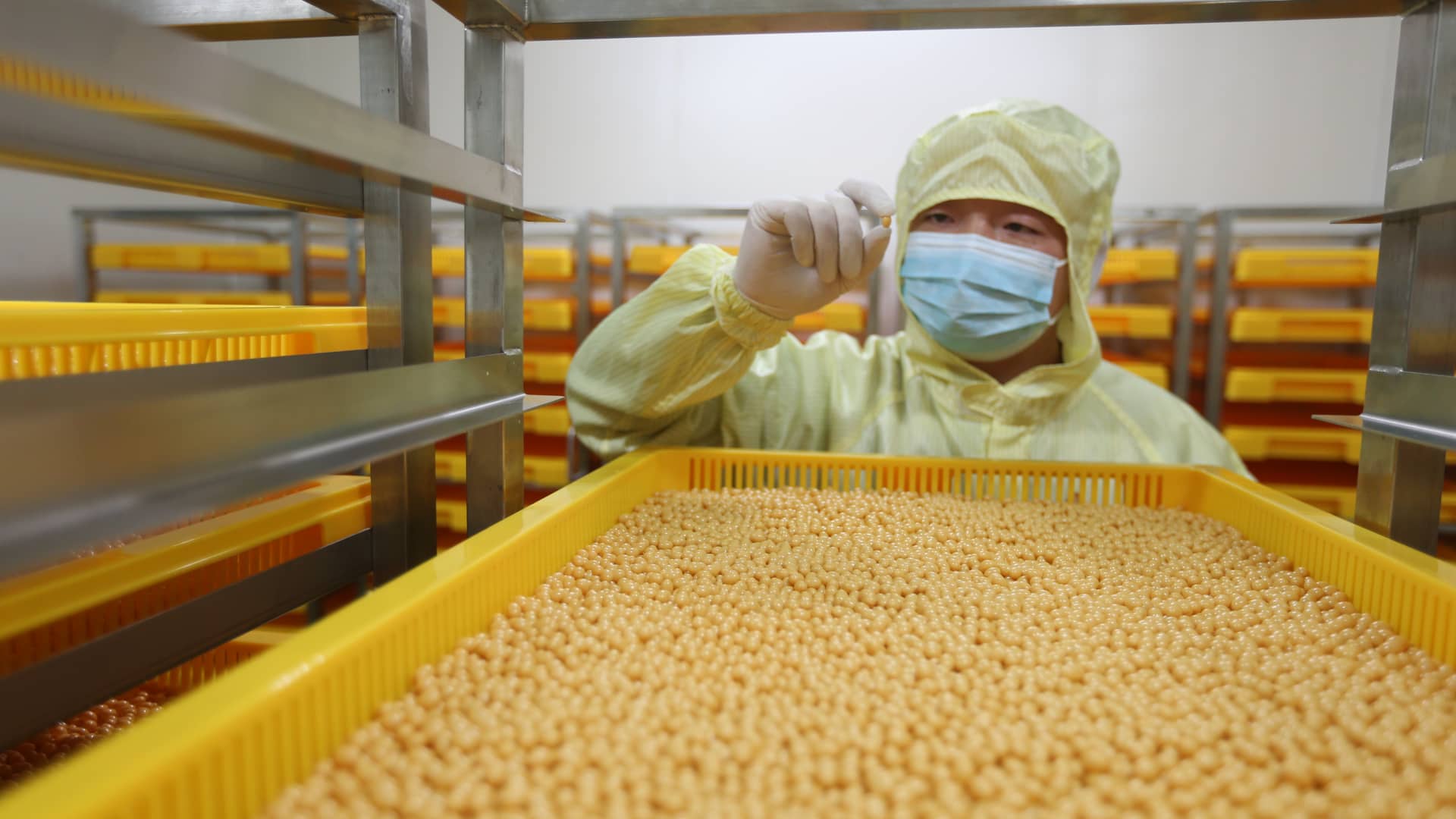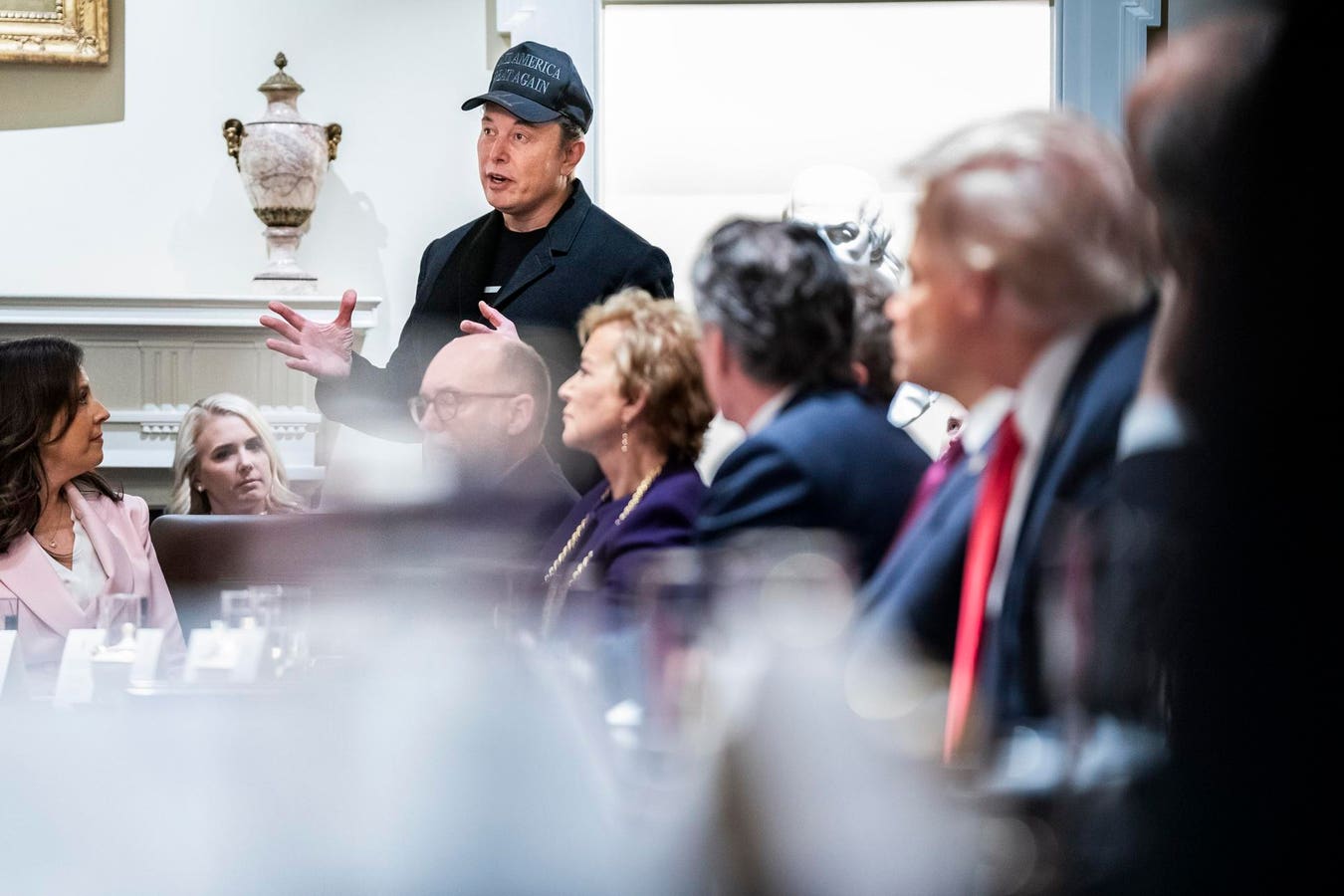
On January 30, 2024, a worker operates a drug production line at a pharmaceutical facility in Meishan, China.
Nurphoto | Nurphoto | Getty Images
Last spring, a relatively unknown biotech firm shocked the biopharmaceutical world when it announced an “unprecedented” milestone: its experimental cancer treatment appeared to outperform Merck‘s Keytruda in clinical trials. The firm, Summit Therapeutics, licensed this drug from Akeso Inc., a Chinese company.
In October, a consortium of life science investors revealed they were investing $400 million to create Kailera Therapeutics, a company focused on developing experimental obesity treatments acquired from Jiangsu Hengrui Pharmaceuticals in China.
Shortly thereafter in December, Merck announced it would license a potential rival to Summit’s drug, alongside a different experimental obesity medication, both sourced from Chinese firms.
As a result, American pharmaceutical companies are swiftly seeking out medical advancements from China. Data from DealForma indicates that nearly 30% of Big Pharma transactions valued at over $50 million involved Chinese firms last year—a significant jump from 20% the previous year and a stark contrast to zero five years prior.
“This is remarkable,” shared Chen Yu, founder and managing partner at TCGX.
Yu noted that two decades ago, biopharmaceutical firms largely overlooked China, viewing it as a minor market. His previous firm, Vivo Capital, was a pioneer in introducing U.S. medical products to Chinese consumers.
Now, the trend appears to be reversing, and Yu never anticipated such widespread proliferation.
Industry experts cite several reasons for this shift: Chinese companies are generating higher-quality molecules than ever and are able to test these compounds on humans more rapidly and affordably than their U.S. counterparts. Buyers have also discovered a viable business model for importing these drugs via licensing agreements. Additionally, the decline in venture capital funding within China has compelled biotech firms to pursue collaborative agreements.
All parties in the industry concur on one thing: this trend is likely here to stay.
Yet, the implications for the U.S. biotech sector remain ambiguous.
Some experts argue that it could be detrimental for American startups if large pharmaceutical enterprises begin favoring promising drugs from China that are available at a fraction of the cost. Others contend that increased competition will enhance innovation, benefiting American companies in the long-term. Regardless, this influx of foreign investments could significantly alter the U.S. biopharma landscape.
“This is a pivotal moment where the pharmaceutical industry is realizing they don’t necessarily need to acquire U.S. biotech firms,” explained Tim Opler, a managing director within Stifel’s Global Healthcare Group. “If it makes sense, they will, but they can equally acquire valuable biotech assets through Chinese licensing agreements.”
Since 2018, Bain Capital Life Sciences has made it a priority to engage with Chinese markets, according to partner Adam Koppel. The private equity firm recognized that the Chinese government and biotech sector were actively transitioning from copycat and fast-follower drugs to pioneering original compounds for global export.
Since this shift, Bain has completed six biopharma deals in China, including the acquisition of an experimental asthma treatment from Hengrui in 2023 and the co-launch of Aiolos, which secured $245 million in a Series A funding round. GSK later acquired Aiolos for up to $1.4 billion within three months.
Koppel anticipates that larger pharmaceutical companies will increasingly embrace drugs developed in China as they gain experience and observe successful outcomes. Concerns about the representativeness of Chinese data for global populations and acceptance by U.S. regulatory authorities are gradually diminishing.
Piotr Swat | Lightrocket | Getty Images
This narrative was highlighted when Summit Therapeutics announced last year that its experimental cancer treatment bested Merck’s blockbuster Keytruda in a head-to-head trial—a feat no other drug has achieved. Given that Summit’s trials were conducted exclusively in China, questions arose about the applicability of the results elsewhere.
During Summit’s search for a drug to develop, co-CEO Bob Duggan was drawn to China after discovering a rising number of innovative medicines emerging from the country. However, this occurred in late 2022, just as the FDA had rejected several applications for drugs solely tested in China, including one from Eli Lilly.
When Summit announced it was licensing the cancer drug ivonescimab from Akeso, industry skeptics questioned how Summit could proceed with the deal knowing that the FDA might not accept it, as shared by co-CEO and President Maky Zanganeh.
“Suddenly, that opened a lot of eyes,” she remarked.
Ivonescimab had already progressed through initial studies and entered late-stage trials in China when Summit finalized the licensing agreement. Summit is now conducting three global Phase 3 trials to meet the FDA’s criteria for studying drugs in diverse populations.
This approach could soon become more prevalent. Investors and industry insiders emphasize that one of the advantages of collaborating with Chinese biotech firms is the access to molecules that have already completed early-stage studies at a lower cost than what is typically found in the U.S. This ensures that U.S. companies can accurately gauge their investments and procure them based on favorable pricing.
Gilead actively searches for assets in China, paralleling their efforts in the U.S. and Europe, according to CFO Andrew Dickinson. Gilead has observed a notable shift in both the quality and volume of assets originating from China.
“The transformation we’ve seen in the last five years is significant and impressive,” Dickinson added.
Moreover, the necessity for Chinese firms to pursue collaborations has intensified. According to TCGX’s Yu, the amount of venture capital raised by the Chinese biotech sector plummeted to $1 billion last year from a high of $6.3 billion in 2021.
“Why continue early-stage development in the U.S.?” Yu queried. “Why not establish clinical proof of concept in China first, and then bring it over to the U.S. for the more costly clinical development process once we know the drug is effective? This could lead to a revolutionary increase in efficiency within our industry.”
This presents both opportunities and challenges for the U.S. biotech sector, depending on one’s perspective. Some, like Yu, view it as a method to lower prescription drug costs, while others worry it might undermine U.S. firms if prominent pharmaceutical players choose to license assets from China rather than invest in American startups.
A worker operates on a drug production line at a pharmaceutical workshop in Meishan, China, on January 30, 2024.
Nurphoto | Nurphoto | Getty Images
On the day in December that Merck announced a deal to license an experimental obesity treatment from China’s Hansoh for as much as $2 billion, shares of the U.S. company Viking Therapeutics plummeted by 18%. Viking is viewed as a potential acquisition target in the lucrative obesity treatment space, and this development suggested that one possible buyer had opted to allocate its resources elsewhere.
Observers draw parallels to the artificial intelligence sector, where China’s DeepSeek claimed to have developed a model as effective as American counterparts at a fraction of the cost.
U.S. policymakers, including President Trump, could perceive this trend in biotech as a threat and take action to halt such agreements—a risk Yu refers to as the “stroke of a pen.” Last year, lawmakers proposed the Biosecure Act, which sought to restrict U.S. firms from collaborating with Chinese contract manufacturers.
Washington has already instituted protectionist policies in other competitive sectors, such as artificial intelligence and semiconductors, and similar measures may extend to life sciences products.
“The overarching message from DeepSeek is that we are facing competition in advanced scientific fields, and China is significantly investing in the development of scientific assets,” noted Stifel’s Opler.
In summary, the race in the biopharmaceutical sector is intensifying.









